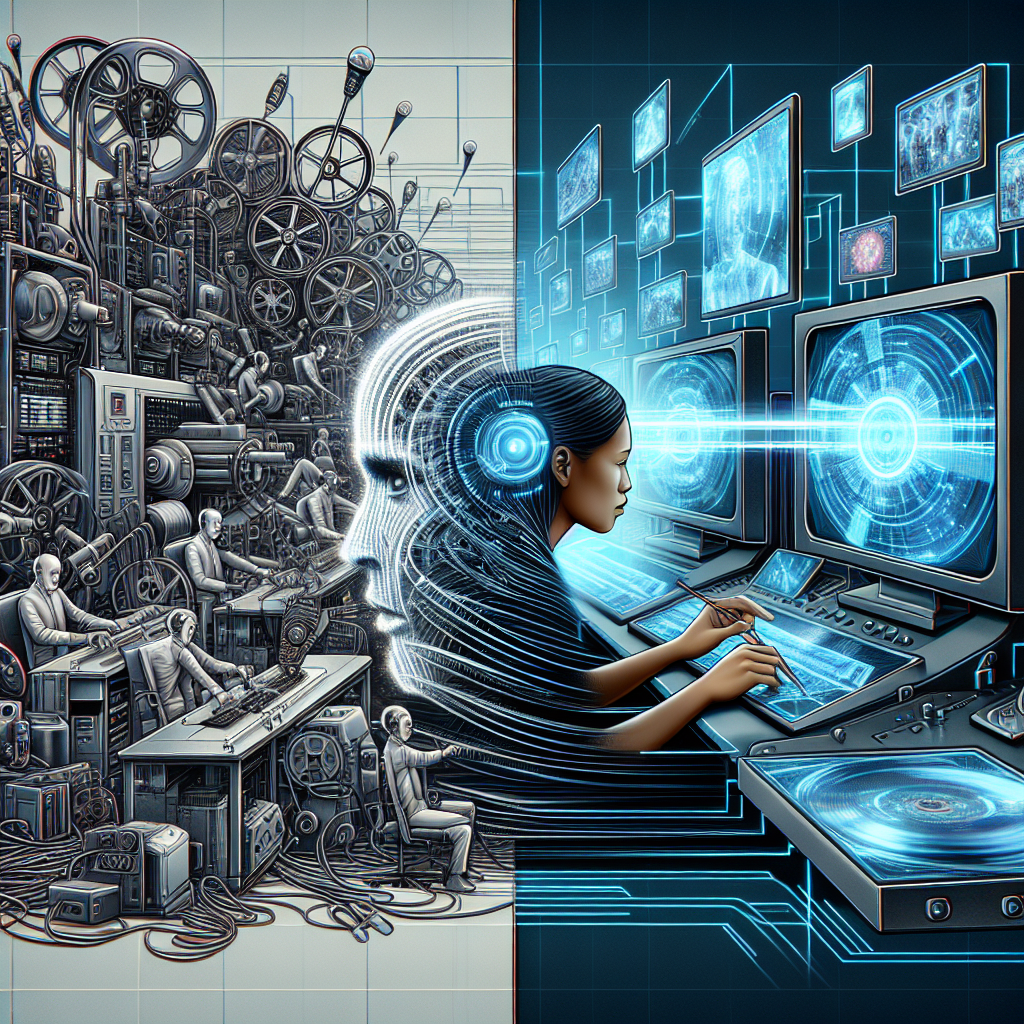Harnessing AI for Video Creation: A Deep Dive Into the Future of Content Production
In the ever-evolving landscape of digital content creation, artificial intelligence (AI) has become a beacon of hope for video creators bogged down by the tedium of traditional editing processes. This article delves into the intricate world of AI video editing tools, piecing together their capabilities, limitations, and potential impact on the future of video production.
AI Video Creation Tools: A Game Changer for Creators
AI video editing tools have carved out a niche for themselves by offering unprecedented ease of use and time-saving features. Creators can now turn to AI for virtually every aspect of video production, from sourcing footage to voiceovers and even scriptwriting. The burgeoning availability of AI-driven platforms promises a revolutionary shift in how we create and consume video content.
The Allure of AI: Effortless Editing at Your Fingertips
The prime selling point for AI video creation tools is the sheer convenience they offer. With just a few clicks, creators can conjure up entire videos – a process that would traditionally take hours, if not days. This ease of use opens up the field to a broader audience, including content creators who may lack advanced editing skills or resources.
Functionality and User Experience
A prominent feature of AI video tools is the text-to-video functionality. Creators can furnish AI with a written prompt, and the tool will piece together a video complete with relevant footage and a synthesized voiceover. This feature caters to a wide range of content needs, from educational materials to snappy social media posts.
The Versatility of Video Formats
AI video creation is not limited to a single format. These tools offer a variety of aspect ratios and styles, making them suitable for different platforms and uses. From the traditional landscape format to square and vertical videos, AI tools ensure the content is optimized for the intended audience, be it YouTube viewers or Instagram users.
The Current State of AI in Video Production
AI has come a long way, but it's not without its challenges. Despite the advancements, AI video creation tools face obstacles that affect the quality and contextuality of the final product.
Limitations in Context Understanding
One of AI's primary limitations is its current inability to grasp nuanced context. While AI can match footage to keywords, understanding the subtleties and storytelling elements of video production is still beyond its grasp. This occasionally results in a disjointed narrative, where video components are technically correct but lack coherence.
The Quality Conundrum
While AI tools compete well with novice editors, they still fall short of the creativity and finesse offered by experienced human editors. Videos generated by AI can be passable and even impressive for rapid content generation – but when it comes to artistic vision and narrative depth, human touch remains irreplaceable.
AI Video Editing: A Boon for Businesses
For businesses, AI video editing tools are a godsend. They offer a fast, cost-effective means to churn out videos for marketing or corporate communications without the need for expensive production teams or equipment. While there's room for improvement, the benefits far outweigh the drawbacks for many corporate use cases.
The Future is Bright: AI's Untapped Potential
As developers continue to refine AI capabilities, the future looks promising for AI video tools. With continued investment and research, AI will likely overcome its current shortcomings, leading to more intuitive, contextually aware editing tools.
The Evolution of Multimodal AI
Advancements in multimodal AI models hold the promise of a new era in video creation. With the ability to understand context and relationships between video elements, AI will soon produce even more sophisticated and seamless videos, blurring the lines between AI-generated and human-created content.
The Road to Creative Autonomy
As AI models like DALL-E 4 and GPT-5 emerge, we edge closer to a future where AI can autonomously generate videos. This leap will redefine content creation, providing creators with tools that not only simplify the process but also enhance creativity, unleashing the full potential of AI in the video domain.
Bridging the Gap: AI and Human Editors
Despite the current limitations, AI has made commendable strides in video editing. It has democratized content creation, allowing those with limited editing knowledge to produce quality videos. However, the craftsmanship of human editors cannot be entirely replicated by AI – at least not yet. The unique creative flair and critical thinking humans bring to the table remain unchallenged.
The Collaborative Future
As AI continues to evolve, it's likely that the future of video editing will be a collaborative effort between AI tools and human editors. AI can handle the grunt work, freeing up creators to focus on the creative aspects of production. This synergy will result in high-quality content that leverages the strengths of both domains.
In conclusion, AI video creation tools are paving the way for a new age in digital content production. They provide a glimpse into a future where video creation is more accessible, efficient, and versatile. As we anticipate further advancements in AI technology, we're on the cusp of a content revolution that will transform video creation and consumption as we know it.
For more insights into the power of AI in video editing and creation, explore OpenAI's research that's pushing the boundaries of what's possible with AI.
Related News
- Unleashing Creative Potential: How AI Transforms Content Creation
- Unleashing Creativity with AI: Revolutionizing Video Production
- Revolutionizing Video Creation: The Power of AI in Crafting Visual Stories
- The Future of Content Creation: A Deep Dive into Revolutionary AI Tools
- Unleashing Creativity with InVideo AI: A Deep Dive into Next-Level Video Production
